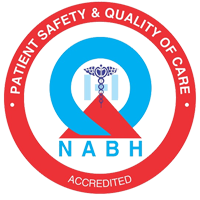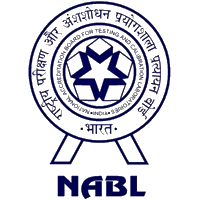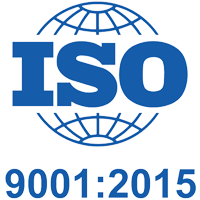Pulmonology / Chest Medicine
Ruby General Hospital has an advanced dedicated Pulmonology department providing Comprehensive, Consultative, Diagnostic and Therapeutic Services under one roof. It is a unit designed for prevention & early detection of respiratory diseases, performing required Interventions and providing Pulmonary Rehabilitation to help patients with respiratory illnesses to lead healthier and productive lives. Our vision is a society whose respiratory health permits a long and productive life. The latest technology is used to provide state-of-the-art care in both the Outpatient and Hospital settings, including the Intensive Care Units.
Pulmonology/ Chest Medicine / Respiratory Medicine is a subspecialty of Internal Medicine that focuses on the diagnosis and treatment of patients with illnesses that affect the lungs and breathing. A Pulmonologist has expertise in the evaluation of patients with symptoms like breathlessness, cough, chest pain, wheezing, chest tightness, snoring & sleepiness, coughing out blood as well as abnormalities of the chest x-ray, chest CT scan and other chest imaging studies.
FACILITIES AVAILABLE
Outpatient clinics for evaluation and treatment of various lung conditions.
Hospital inpatient services for evaluation and treatment of various lung conditions.
Respiratory Critical Care - Emergency & Intensive care services for treatment of the critically ill.
Sleep disorders evaluation and treatment.
Interventional Pulmonology :
Diagnostic Flexible Video Bronchoscopy, Bronchoalveolar Lavage (BAL), Endobronchial Biopsy, Fluoroscopy guided Transbronchial Biopsy (TBLB), Transbronchial FNAC (cTBNA),Therapeutic Flexible Video Bronchoscopy & Rigid Bronchoscopy, Foreign Body Removal, Airway Stenting, Management of Malignant & Non malignant Central airway obstructing lesion, Endobronchial Glue Therapy for Hemoptysis & Bronchopleural Fistula
EBUS / Endobronchial Ultrasonography TBNA(planned shortly)
CT and USG guided FNAC, Trucut Biopsy
Ultrasound guided Pleural Aspiration, Intercostal Drainage
Medical Thoracoscopy
-
Pulmonary Function Laboratory :
Spirometry (with Bronchodilator Reversibility)
FENO (Fractional Exhaled Nitric Oxide)
DLCO (Diffusing capacity of the Lungs for Carbon Monoxide)
Lung Volumes
6 minutes walk test
CO Check
Pulmonary Rehabilitation Program
Quit Smoking program
Laboratory investigation of blood (blood tests), ABG ( Arterial Blood Gas)
Chest X-rays
CT scanning including LDCT (Low Dose screening CT for early lung cancer screening), HRCT, MDCT, Virtual Bronchoscopy.
Level II & III Polysomnography (split night & double night sleep studies) for the diagnosis & therapy of Obstructive Sleep Apnea (OSA)
Option of attending Obesity Clinic & Bariatric (Obesity) Surgery available now
Our Pulmonary specialists have expertise in a range of respiratory conditions including but not limited to:
Management of all Respiratory Emergencies & Acute Critical conditions
ASTHMA & ALLERGIC LUNG DISORDERS (including ASPERGILLOSIS and ABPA)
LUNG CANCER
CHRONIC OBSTRUCTIVE LUNG DISEASE (COPD)
Disorders of the PLEURA (including MESOTHELIOMA, PLEURAL EFFUSION, EMPYEMA AND PNEUMOTHORAX)
INTERSTITIAL LUNG DISEASE (ILD), SARCOIDOSIS
EBUS / Endobronchial Ultrasonography TBNA(planned shortly)
CT and USG guided FNAC, Trucut Biopsy
Ultrasound guided Pleural Aspiration, Intercostal Drainage
Medical Thoracoscopy
Asbestos related conditions (including ASBESTOSIS, MESOTHELIOMA) & other OCCUPATIONAL RESPIRATORY DISEASES
TUBERCULOSIS (TB)
SLEEP DISORDERED BREATHING (including Obstructive Sleep Apnea / OSA)
PNEUMONIA, BRONCHITIS
BRONCHIECTASIS
PULMONARY HYPERTENSION
PULMONARY HAEMORRHAGE
PULMONARY EMBOLISM
Pulmonary manifestations of systemic disease
CYSTIC FIBROSIS and other Genetic and developmental lung disorders
Now we are in a tie up with Revised National Tuberculosis Control Program (RNTCP) through Joint Effort for Elimination of Tuberculosis (JEET) in pledge for elimination of Tuberculosis (TB) by 2025, thus, providing CBNAAT & Rapid TB CULTURES FREE OF COST.
Pulmonary Rehabilitation
Pulmonary rehabilitation, also known as respiratory rehabilitation, is an important part of the management and health maintenance of people with chronic respiratory disease who remain symptomatic or continue to have decreased function despite standard medical treatment. It is a broad therapeutic concept. It is defined by the American Thoracic Society and the European Respiratory Society as an evidence-based, multidisciplinary, and comprehensive intervention for patients with chronic respiratory diseases who are symptomatic and often have decreased daily life activities. In general, pulmonary rehabilitation refers to a series of services that are administered to patients of respiratory disease and their families, typically to attempt to improve the quality of life for the patient. Pulmonary rehabilitation may be carried out in a variety of settings, depending on the patient's needs, and may or may not include pharmacologic intervention.
Medical uses
The NICE clinical guideline on chronic obstructive pulmonary disease states that “pulmonary rehabilitation should be offered to all patients who consider themselves functionally disabled by COPD (usually MRC [Medical Research Council] grade 3 and above)”. It is indicated not only in patients with COPD, but also in:
- Cystic fibrosis
- Bronchitis
- Sarcoidosis
- Idiopathic pulmonary fibrosis
- Before and after lung surgery
It appears not to be harmful and may be helpful for interstitial lung disease
Aim
To reduce symptoms
To improve knowledge of lung condition and promote self-management
To increase muscle strength and endurance (peripheral and respiratory)
To increase the exercise tolerance
To reduce length of hospital stay
To help to function better in day-to-day life
To help in managing anxiety and depression
Benefits
Reduction in number of days spent in hospital one year following pulmonary rehabilitation.
Reduction in the number of exacerbations in patients who performed daily exercise when compared to those who did not exercise.
Reduced exacerbations post pulmonary rehabilitation
Weaknesses addressed
Ventilatory limitation
Increased dead space ventilation
Impaired gas exchange
Increased ventilatory demands due to peripheral muscle dysfunction
Gas exchange limitation
Compromised functional inspiratory muscle strength
Compromised inspiratory muscle endurance
Cardiac dysfunction
Increase in right ventricular afterload due to increased peripheral vascular resistance.
Skeletal muscle dysfunction
Average reduction in quadriceps strength decreased by 20-30% in moderate to severe COPD
Reduction in the proportion of type I muscle fibres and an increase in the proportion of type II fibres compared to age matched normal subjects
Reduction in capillary to fibre ratio and peak oxygen consumption
Reduction in oxidative enzyme capacity and increased blood lactate levels at lower work rates compared to normal subjects
Prolonged periods of under nutrition which results in a reduction in strength and endurance
Respiratory muscle dysfunction
Pulmonary rehabilitation is generally specific to the individual patient, with the objective of meeting the needs of the patient. It is a broad program and may benefit patients with lung diseases such as chronic obstructive pulmonary disease (COPD), sarcoidosis, idiopathic pulmonary fibrosis (IPF) and cystic fibrosis, among others. Although the process is focused on the rehabilitation of the patient him/herself, the family is also involved. The process typically does not begin until a medical exam of the patient has been performed by a licensed physician.
The setting of pulmonary rehabilitation varies by patient; settings may include inpatient care, outpatient care, the office of a physician, or the patient's home.
The goal of pulmonary rehabilitation is to help improve the well-being and quality of life of the patient and their families. Accordingly, programs typically focus on several aspects of the patient's recovery and can include: - Medication management - Exercise training - Breathing retraining - Education about the patient's lung disease and how to manage it - Nutrition counseling - Emotional support.
Pharmacologic intervention
Medications may be used in the process of pulmonary rehabilitation including: Anti-inflammatory agents (inhaled steroids), Bronchodilators, Long-acting bronchodilators, Beta-2 agonists, Anticholinergic agents, Oral steroids, Antibiotics, Mucolytic agents, Oxygen therapy, or Preventative therapy (i.e., Vaccination).
Exercise
Exercise is the cornerstone of pulmonary rehabilitation programs. Although, exercise training does not directly improve lung function, it causes several physiological adaptations to exercise which can improve physical condition. There are three basic types of exercises to be considered. Aerobic exercise tends to improve the body's ability to use oxygen by decreasing the heart rate and blood pressure. Strengthening or resistance exercises can help build strength in the respiratory muscles. Stretching and flexibility exercises like yoga and Pilates can enhance breathing coordination. As exercise can trigger shortness of breath, it is important to build up the level of exercise gradually under the supervision of health care professionals (e.g., respiratory therapist, physiotherapist, exercise physiologist). Additionally pursed lip breathing can be used to increase oxygen level in patient's body. Breathing games can be used to motivate patients to learn pursed lip breathing technique.
Quick links
- Emergency Services
- International Patient Services
- Corporate Tie-Up
- TPA & Cashless Facilities
- Find a Doctor




















